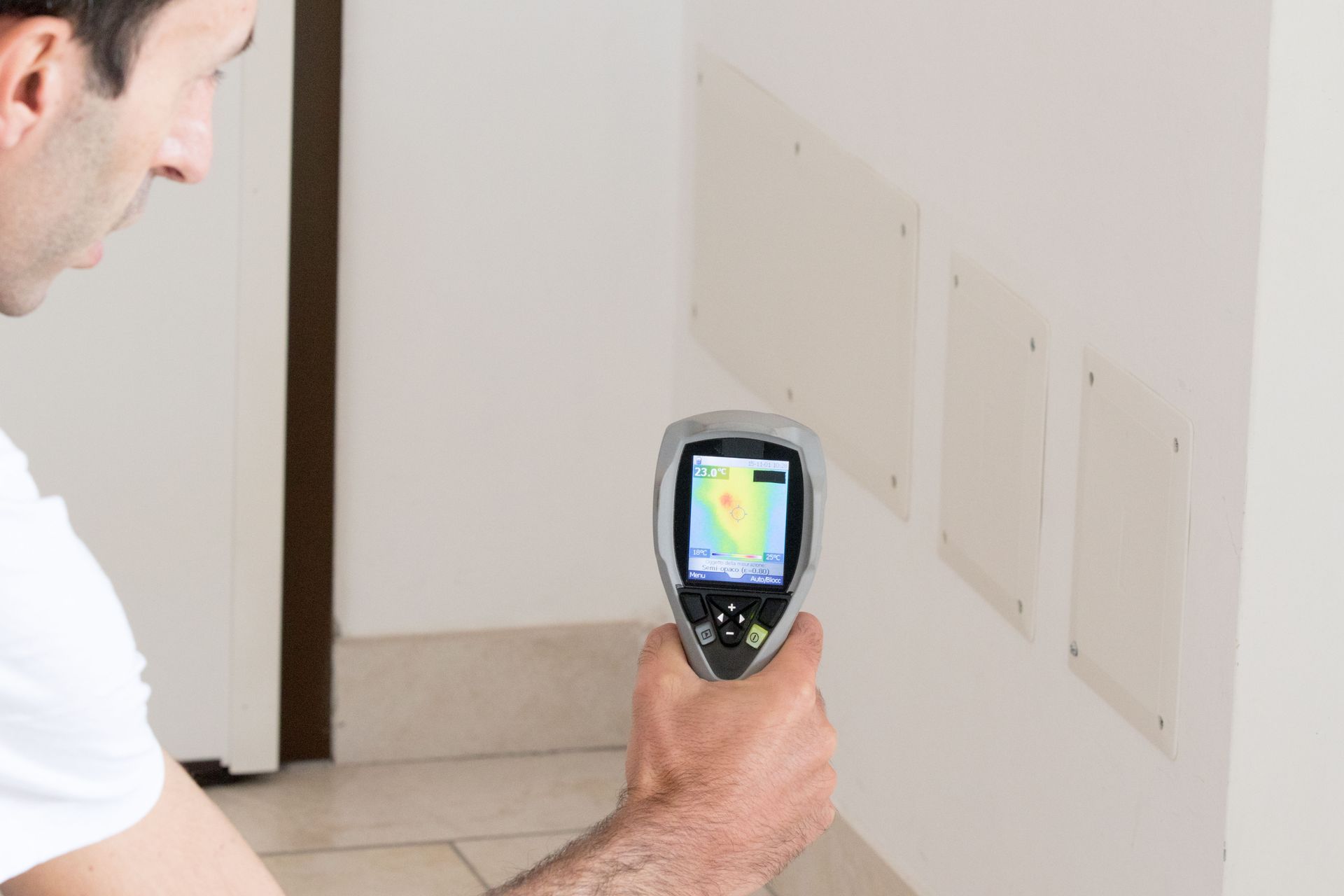November 21, 2025
Infrared inspections have become an integral tool for businesses striving to maintain high standards of safety and compliance. By identifying potential issues early and efficiently, these inspections facilitate proactive maintenance and regulatory adherence, ensuring both safety and operational continuity. Beyond merely troubleshooting, infrared technology empowers businesses to adopt a forward-thinking approach, thereby reducing the likelihood of accidents and failures. Regulatory bodies across various industries recognize the value of these inspections in maintaining compliance with safety standards. As technology continues to advance, the capabilities and benefits of these inspections are expected to expand, further solidifying their role in business operations.
Infrared Technology
The Basics of Infrared Thermography
Firstly, infrared thermography is a non-invasive and non-destructive method of identifying heat patterns, making it invaluable for diagnosing issues invisible to the naked eye. Detecting infrared radiation emitted from objects enables the visualization of thermal disparities, which might indicate hidden problems. For instance, thermal imaging can reveal areas of moisture intrusion, electrical faults, or insufficient insulation. This technology hinges upon the principle that temperatures of equipment or structures often correlate with their operating condition. Consequently, the identification of abnormal heat signatures is a powerful means of predicting failure and preventing accidents.
How Infrared Cameras Work
Infrared cameras capture electromagnetic radiation in the infrared spectrum, allowing them to measure temperature differences across surfaces. The technology typically involves a thermographic camera, which senses heat radiated by objects and converts it into a thermogram—a visual representation that distinguishes variations in temperature. These images provide critical data that can be analyzed for insights into the operational status of equipment or structural integrity. By translating thermal energy into visible temperature differences, infrared cameras help identify problem areas effectively. This transformative capability turns heat detection into a strategic advantage for businesses aiming to improve safety and efficiency.
Different Types of Infrared Inspections
Furthermore, these types of inspections can be classified into several categories, including electrical, mechanical, and building diagnostics. Each type serves a unique purpose, from identifying electrical hot spots and overloaded circuits to detecting mechanical wear and insulation failures. Notably, according to the International Association of Certified Home Inspectors, thermal imaging can identify seven common electrical problems: hot or loose connections, overloaded wiring, overloaded circuits, overloaded transformers, overloaded motors, arcing, and excessive harmonics. In building inspections, infrared scanning helps uncover issues like water leaks and energy loss. These diverse applications underscore the versatility of these inspections across different sectors.
Applications Across Different Industries
Infrared inspections are utilized extensively in industries ranging from manufacturing to healthcare, offering wide-ranging benefits. In the manufacturing sector, they ensure equipment efficiency and minimize downtime by enabling early detection of potential failures. In the healthcare industry, infrared technology aids in maintaining critical infrastructure, such as HVAC systems and electrical panels, ensuring a safe environment for patients and staff. Infrastructure services, like power utilities and railways, also benefit from identifying faulty components before they cause service interruptions. The adaptability of these inspections across these and other industries highlights their broader impact on operational safety and reliability.
Technological Advancements
Recent advancements in infrared technology have significantly enhanced inspection capabilities, elevating its effectiveness and precision. Improved sensor sensitivity and image resolution have increased the accuracy of thermal readings, making it easier to detect subtle temperature changes. The integration of artificial intelligence into infrared software further enriches the analysis, allowing for faster and more accurate diagnosis of potential issues. Moreover, portable and drone-mounted infrared cameras have expanded access and convenience for a variety of inspection scenarios. These technological breakthroughs not only improve current capabilities but also pave the way for innovative applications in the future.
Safety Standards
Early Detection of Electrical Hazards
Continuing, detecting electrical hazards before they escalate into critical issues is a crucial advantage of infrared inspections. Being able to spot hot or loose connections, overloaded wiring, or arcing allows maintenance teams to address problems early, preventing potential injuries and equipment damage. Successful early detection is particularly critical for high-risk environments such as chemical plants and oil refineries, where electrical faults can lead to catastrophic incidents. The ability of thermal imaging to reveal hidden electrical issues translates into enhanced safety measures and a reduction in the likelihood of unexpected failures. As such, these regular inspections are fundamental for maintaining robust electrical safety protocols.
Precautionary Measures
These inspections play an essential role in mitigating fire risks across business environments. By identifying overheated electrical panels, motors, or circuits, they allow for timely preventative measures, reducing the chances of electric fires. This proactive approach is vital in industries like warehousing, where combustible materials can exacerbate the impact of a fire incident. The confidence gained from knowing that the thermal conditions of electrical assemblies are monitored regularly adds a layer of security. Consequently, these inspections help in maintaining high safety standards, ensuring that fire hazards are systematically managed.
Structural Integrity of Buildings
Additionally, the structural integrity of any business facility is crucial for ensuring the safety of its occupants and operations. Infrared inspections contribute to this by uncovering structural deficiencies that might not be visible during routine visual inspections. For example, they can identify areas of heat loss or moisture intrusion in walls and roofs, both of which can compromise structural soundness over time. In this way, thermal imaging helps in pinpointing areas requiring immediate attention, thereby protecting the integrity of the structural framework. Addressing these issues before they escalate into severe structural failures is vital for long-term safety and compliance.
Employees and Asset Protection
Ensuring the safety of employees and the protection of valuable assets is a business imperative, and these types of inspections aid in fulfilling this responsibility. By detecting anomalies such as overheated machinery or hidden moisture leaks, they help avert accidents that could harm personnel or damage equipment. This is especially important in high-risk industries like manufacturing, where machine malfunctions could lead to significant downtime or worker injuries. Additionally, businesses that prioritize employee safety tend to experience improvements in workforce morale and productivity. In essence, the preventative insights from these inspections are integral to fostering a safe and efficient workplace environment.
Case Studies in Improved Safety Outcomes
Several case studies exemplify the positive impact of infrared inspections on safety outcomes. In one example, a manufacturing facility significantly reduced its frequency of equipment-related accidents by implementing a routine infrared inspection program. Another case involved a large commercial building where thermal imaging successfully identified hidden water leaks, preventing potential structural damage and significant repair costs. A power utility company reduced electrical faults and enhanced service reliability by integrating regular thermal inspections into its operations. These real-world examples highlight the tangible benefits of adopting infrared technology for proactive safety management. The documented successes reinforce the critical role of these inspections in improving safety standards across industries.
Infrared inspections have proven to be an indispensable tool for businesses aiming to enhance safety, improve operational efficiency, and ensure compliance with safety regulations. These inspections provide early detection of potential issues, allowing for proactive maintenance that can prevent costly repairs and avoid workplace accidents. From identifying electrical hazards to ensuring structural integrity, these inspections play a vital role in safeguarding both employees and assets. If you have questions or would like more information about our services, contact us at Sheridan Electric Inc today.


